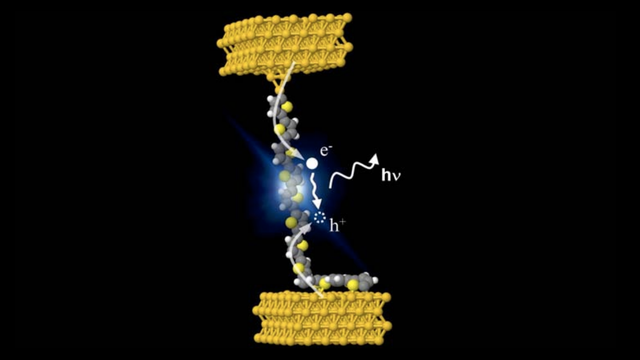Single-Molecule LEDs are a Big Deal
2014.02.06

Scientists from the Institute of Physics and Chemistry of Materials in Strasbourg, France, have developed the first ever single-molecule LED.
Formed from a single polythiophene wire placed between the tip of a scanning tunneling microscope and a gold surface, the new device emits light when current passes through in a certain direction.
Although it's wildly impressive, it isn't at the stage where it would appear in your hand held devices. A scanning tunneling microscope is probably the size as your refrigerator, so the LED itself isn't pocketable just yet.
It is in fact the promise of the thing that makes the research a huge deal. The humble LED lies at the core of modern-day display technologies.
A single molecule, in contrast, is best measured in nanometers, a unit just a thousandth of the size. Shrinking the light-emitting element of a pixel by the order of hundreds could, then, make for insane, molecular-scale resolution.
The development is a fundamental stepping stone in our understanding of quantum behavior, allowing scientists to better understand how interactions between electricity and light work at the smallest of scales.
More than that, it will mean that researchers can get to building molecular-sized components that combine electronic and optical abilities. But they won't be devices you actually interact with directly. Rather, they'll be sub-units of devices, components which employ quantum effects to make your devices faster and more efficient.
[Physical Review Letters]
More Articles
Copyright © Fooyoh.com All rights reserved.